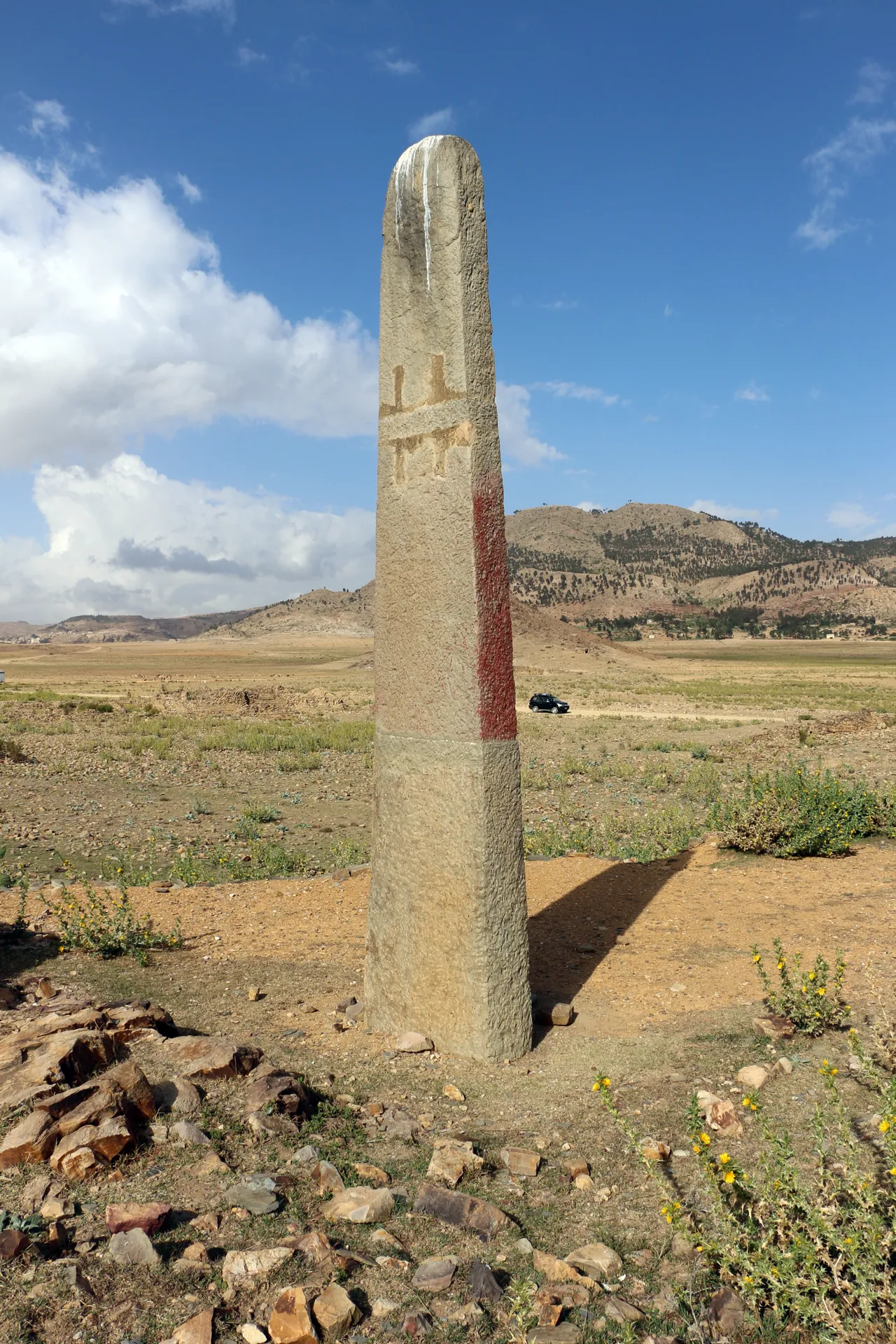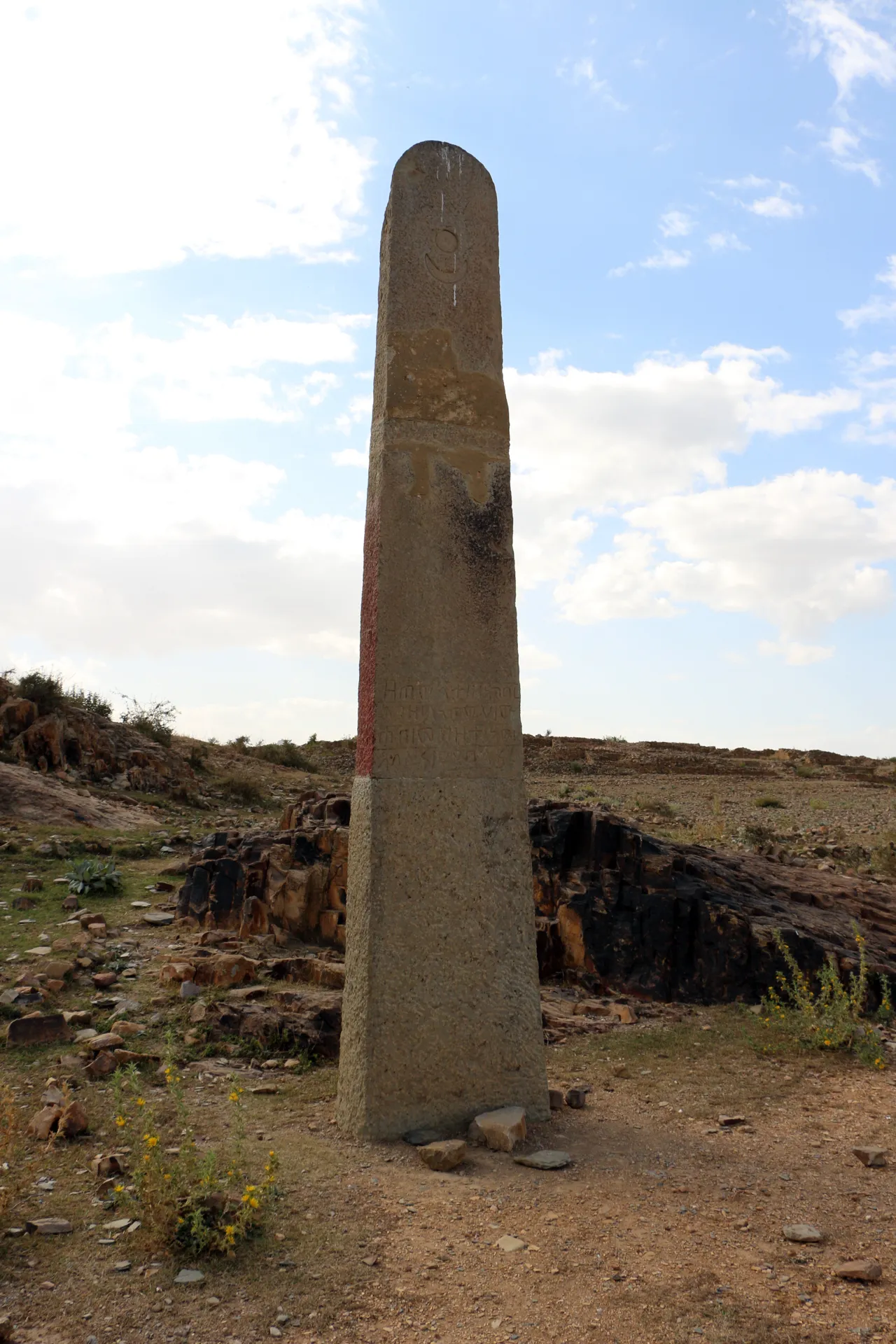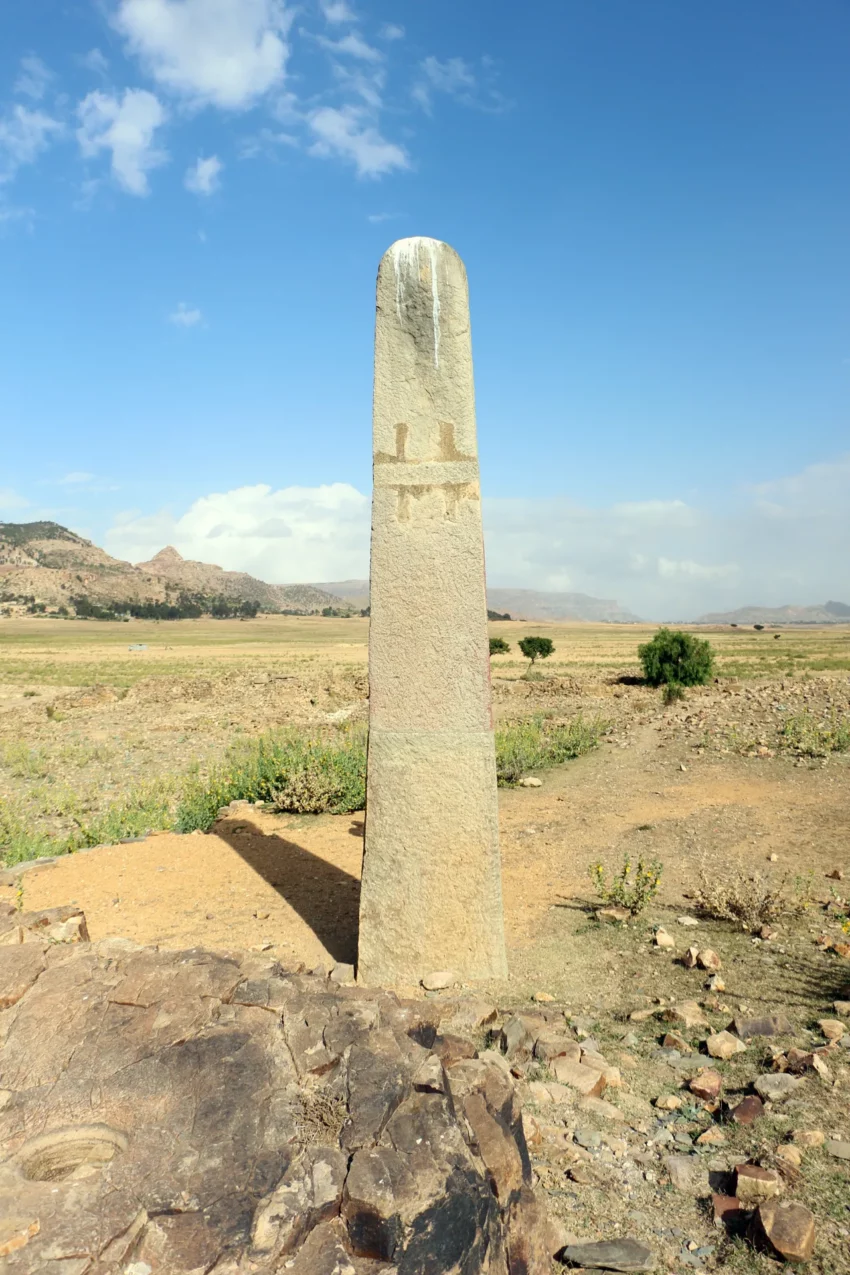Hawulti: The Ancient Obelisk of Matara, Eritrea
In the historical town of Matara, Eritrea, stands the Hawulti, a pre-Aksumite obelisk of great significance. This monument bears the oldest known example of the ancient Ge’ez script, making it a valuable piece of Eritrea’s rich cultural heritage.
Get your dose of History via Email
Description of Hawulti
The Hawulti obelisk rises to a height of 5.5 meters (18 feet) and features a disk and crescent at its top. These symbols, according to Edward Ullendorff, likely served to place the stele under the protection of the gods Šamaš, the Sun goddess, and Sin, the Moon god. The absence of vowel marks in the Ge’ez script and these pre-Christian symbols led Ullendorff to date the monument to the early 4th century AD.

Inscription and Interpretation
The inscription on the Hawulti has sparked different interpretations among scholars. Ullendorff translated it as:
“This is the obelisk which had (caus) made
‘Agaz for his fathers who have
carried off the youth of ‘W’
‘LF as well as of SBL.”
Ullendorff’s translation differs from that of Enno Littmann in several respects. Littmann believed the inscription mentioned the digging of canals, despite no evidence of such in the area. Ullendorff argued that the verb “s-h-b” in the inscription should translate to “to drag along, to capture.” He also suggested that the nouns ‘W’, ‘LF, and SBL referred to local communities, based on discussions with local informants. For instance, Baraknaha, the site of a 12th-century church, was known as subli, and Gunda Gunde, another well-known Orthodox church, had once been known as Aw`a ‘ilfi.

Modern History of Hawulti
The Deutsche Aksum-Expedition led by Littmann discovered the Hawulti in 1906. At that time, the obelisk had been pushed over and broken in half. The Italian colonial government later repaired the monument using two iron bars and set it upright, albeit inaccurately. During the Eritrean-Ethiopian War, Ethiopian troops toppled and damaged the obelisk. The National Museum of Eritrea has since repaired it.
Significance and Legacy
The Hawulti remains a vital link to the early history of the ancient state of Aksum. Dating back to the 3rd or 4th century AD, it stands as the oldest known object with inscriptions in the Ge’ez language. Its symbols of the sun and moon reflect the religious beliefs of the time, and the inscription commemorates the ancestors’ valor as ordered by King Ageza, according to local legend.

Conclusion
Hawulti, with its ancient inscriptions and celestial symbols, continues to captivate historians and visitors alike. Despite the damage it has suffered over the centuries, the obelisk stands as a proud testament to Eritrea’s ancient past and its enduring cultural legacy.
Sources:

